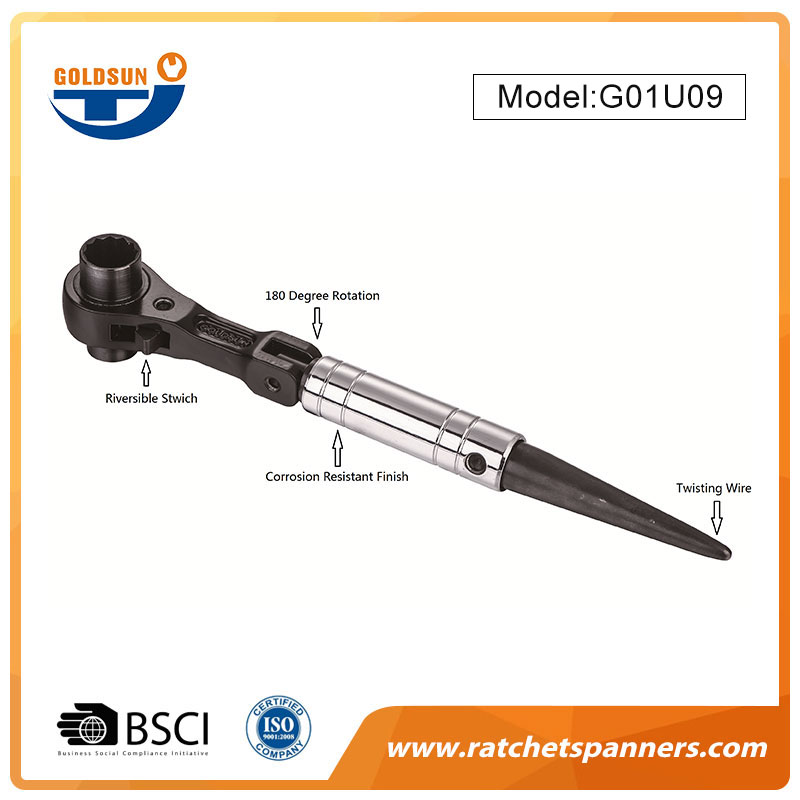The Evolution of the Ratchet Socket Wrench: Integrating Electrification and Intelligence
2025-09-26
Table of Contents
-
A Legacy of Mechanical Ingenuity
-
The Electrified Leap Forward
-
The Rise of the Smart Tool
-
Key Features and Technical Parameters of Modern Ratchet Socket Wrenches
-
Choosing the Right Intelligent Ratchet Socket Wrench
-
Frequently Asked Questions (FAQ)
A Legacy of Mechanical Ingenuity
For over a century, the ratchet socket wrench has been a cornerstone of mechanical work. Its simple yet brilliant design—a ratcheting mechanism that allows for continuous rotation in tight spaces without removing the tool—revolutionized how professionals and DIY enthusiasts tackled fastening tasks. From automotive repair to industrial assembly, the manual ratchet socket wrench was a symbol of practicality. However, the demands of modern efficiency and precision have driven the next stage of its evolution: the seamless integration of electrification and intelligence.
The Electrified Leap Forward
The first major transformation was the shift from manual power to electric power. The introduction of cordless electric ratchet socket wrench tools marked a significant leap in productivity. By replacing human torque with consistent motorized power, these tools drastically reduced operator fatigue and accelerated completion times. Tasks that once required considerable physical effort could now be accomplished with the gentle pull of a trigger. This electrification laid the essential groundwork, providing the consistent power source necessary for more advanced features to come.
The Rise of the Smart Tool
Today, the development of the ratchet socket wrench is defined by intelligence. Modern smart wrenches are equipped with microprocessors and sensors that transform them from simple power tools into precise data-driven instruments. Key intelligent features now include:
-
Precision Torque Control: Digital settings allow users to program exact torque values, ensuring fasteners are tightened to manufacturer specifications, which is critical for safety and integrity in automotive and aerospace applications.
-
Real-Time Data Feedback: Built-in displays show real-time torque readings, angle measurements, and battery status, providing unparalleled control over the fastening process.
-
Bluetooth Connectivity: Tools can wirelessly connect to mobile devices or workshop management systems to log data, create work reports, and access pre-programmed torque settings for specific jobs.
-
Ergonomic Design: Despite increased functionality, advanced models are designed to be compact and well-balanced, allowing access to confined spaces that were challenging for bulkier early electric models.
Key Features and Technical Parameters of Modern Ratchet Socket Wrenches
When evaluating an advanced ratchet socket wrench, understanding the technical specifications is crucial. The following parameters define its capability and suitability for different tasks.
Key Specifications List:
-
Voltage (V): Determines the power potential (e.g., 12V for light-duty, 18V for heavy-duty).
-
No-Load Speed (RPM): The maximum speed of the anvil rotation, impacting how quickly a bolt can be run down.
-
Maximum Torque (Nm): The peak torque output, critical for loosening stubborn fasteners and final tightening.
-
Battery Type and Capacity (Ah): Lithium-ion is standard; Amp-hour (Ah) rating indicates runtime.
-
Drive Size: Common sizes are 1/4-inch, 3/8-inch, and 1/2-inch, defining the size of sockets it accepts.
-
Smart Features: Includes torque accuracy, data logging, and connectivity protocols.
The table below compares typical models across different performance tiers:
| Parameter | Standard Electric Ratchet | Intelligent High-Performance Ratchet | Significance |
|---|---|---|---|
| Voltage | 12V | 18V / 20V | Higher voltage generally provides more power and higher torque output for demanding applications. |
| Max Torque | 60 - 100 Nm | 150 - 250 Nm | Essential for heavy-duty applications like truck lug nuts or industrial machinery. |
| Smart Control | Basic motor control | Programmable torque & angle, real-time display | Ensures precision, prevents under/over-tightening, and provides audit trails for quality control. |
| Battery Capacity | 2.0 Ah | 4.0 - 6.0 Ah | Higher capacity extends work time between charges, crucial for productivity. |
Choosing the Right Intelligent Ratchet Socket Wrench
Selecting the ideal tool depends on your specific needs. For professional mechanics working on engines and tight spaces, a compact 12V or 18V intelligent ratchet with high precision is ideal. For industrial maintenance crews dealing with larger fasteners, a high-torque 18V/20V model is necessary. DIY users might find a capable 12V model sufficient for most household tasks. Always prioritize ergonomics, battery platform compatibility with other tools, and the robustness of the smart features that matter most to your work.
Frequently Asked Questions (FAQ)
Q1: How accurate is the torque control on an intelligent ratchet socket wrench?
High-end intelligent wrenches offer torque accuracy within +/- 3%, which is sufficient for most critical applications. This is a significant improvement over manual torque wrenches and basic electric models, providing confidence in achieving precise fastener tension.
Q2: Can a smart ratchet socket wrench be used for final torqueing on critical components like cylinder heads or wheel lug nuts?
Yes, absolutely. This is a primary function of these tools. Their programmed torque and angle tightening modes are specifically designed for such critical applications, ensuring compliance with engineering specifications and enhancing safety.
Q3: Are these intelligent tools much heavier and bulkier than traditional electric ratchets?
While early models were bulkier, advancements in motor and battery technology have led to designs that are only marginally larger than standard electric ratchets. The focus on ergonomics ensures that the added functionality does not come at a significant cost to maneuverability or user comfort.
If you are very interested in YUYAO GOLDEN SUN TOOLS' products or have any questions, please feel free to contact us.





